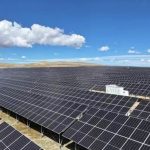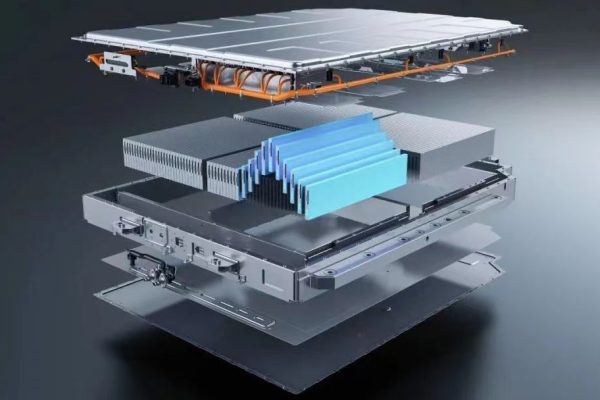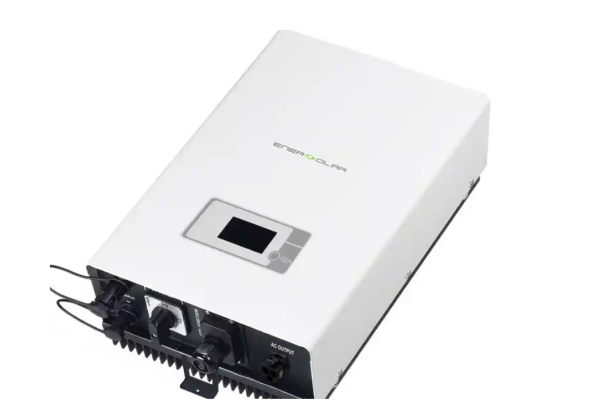In the industrial sector, managing cold and heat loads efficiently is crucial for reducing energy consumption, improving operational efficiency, and cutting costs. Industrial processes, particularly in industries like food production, chemical manufacturing, and pharmaceuticals, often require significant amounts of energy for heating or cooling purposes. This energy demand can be highly variable, with peaks occurring during specific times of the day or under certain operational conditions.
With the growing push towards energy efficiency and sustainability, energy storage systems (ESS) have emerged as a key solution for optimizing these fluctuating load demands. By leveraging storage technologies such as thermal storage and electrical energy storage (batteries), industrial facilities can shift loads, balance demand, and minimize energy costs while maintaining the required temperature stability for operations.
In this article, we’ll explore how energy storage can optimize cold and heat load management in industrial settings, highlight successful case studies, and discuss key technologies and strategies for deployment.
1. Understanding Industrial Cold and Heat Load Optimization
Industrial processes, such as HVAC systems, refrigeration, and heating systems, consume a substantial portion of energy. The demand for these systems can vary significantly based on operational schedules, environmental conditions, and product requirements. Cold load optimization typically focuses on systems like cold storage warehouses, refrigeration units, and chillers, while heat load management is vital in boilers, furnaces, and drying systems.
How Energy Storage Optimizes These Loads:
Energy storage technologies can be deployed to optimize cold and heat loads in the following ways:
- Load Shifting: Energy storage can store excess energy during off-peak hours (e.g., nighttime) and use it to meet demand during peak periods, avoiding high energy costs.
- Peak Load Reduction: By storing energy when demand is low and discharging it during peak hours, energy storage systems help balance out peaks in demand, reducing reliance on the grid and optimizing operational costs.
- Improved System Efficiency: Proper integration of energy storage with industrial systems ensures that heating and cooling processes operate at their most energy-efficient levels.
In the following sections, we’ll explore real-world applications of these principles.
2. Real-World Applications and Case Studies
a) Cold Storage Optimization for a Food Processing Plant
Challenge: A large food processing plant in North America struggled with high energy costs due to the significant cooling requirements of its cold storage facilities. The refrigeration systems operated continuously, and energy demand peaked during the summer months, causing a strain on the facility’s electrical infrastructure and increasing operating costs.
Solution: The facility deployed a combination of thermal energy storage and battery storage systems. The thermal storage system was used to store chilled water during off-peak hours, which could then be used to cool the cold storage rooms during peak hours. Meanwhile, the battery storage system helped shift electrical loads, allowing the facility to avoid using grid electricity during peak periods.
Outcome: The integration of energy storage led to a 25% reduction in electricity costs and improved operational efficiency. The cooling system now operates at optimal efficiency, with thermal storage meeting about 30% of the facility’s cooling needs during peak hours.
Key Takeaways:
- Thermal storage can be a highly effective solution for managing cold load fluctuations.
- Combining battery storage with thermal solutions offers comprehensive energy optimization.
- Storage systems can achieve significant cost savings by reducing peak demand charges.
b) Heat Load Optimization in Chemical Manufacturing
Challenge: A chemical manufacturing plant in Europe faced high operational costs due to fluctuating heating requirements for its production processes. The heat demand was intermittent, and the plant had to rely on high-efficiency natural gas boilers to meet the load during peak periods.
Solution: The plant adopted a combined heat and power (CHP) system with battery storage. The CHP system generated electricity and waste heat, while the batteries were charged during periods of low heat demand and discharged during high-demand periods. The integration of energy storage allowed the plant to reduce reliance on natural gas and maximize the use of waste heat.
Outcome: The plant saw a 20% reduction in heating costs, with the energy storage system helping to smooth out the heat demand profile and reduce dependency on natural gas boilers. The system also enhanced overall energy efficiency by ensuring that waste heat was captured and utilized effectively.
Key Takeaways:
- Battery storage can help optimize heat load in manufacturing facilities by ensuring waste heat is used effectively.
- Integrating CHP systems with energy storage maximizes energy use and reduces reliance on fossil fuels.
- Energy storage systems can help reduce fuel consumption and improve system efficiency.
c) HVAC Load Optimization for a Commercial Complex
Challenge: A commercial office complex in Asia was struggling with high electricity bills due to the fluctuating energy demand from its HVAC system. The building’s air conditioning system was powered by a large number of chillers that operated during peak hours, leading to high operational costs during the day.
Solution: The facility installed a modular battery storage system to manage the fluctuating load. The system was programmed to charge during off-peak hours when electricity rates were low and discharge during the day when the building’s cooling demand peaked.
Outcome: The battery storage system allowed the building to reduce cooling costs by 18%, significantly lowering energy consumption during peak periods. Additionally, the system helped the building meet its sustainability goals by reducing reliance on the grid and lowering carbon emissions.
Key Takeaways:
- Modular battery storage offers flexibility for cooling load optimization in commercial buildings.
- Off-peak charging and daytime discharge can significantly reduce energy costs.
- Energy storage provides an opportunity to meet sustainability goals while optimizing operational efficiency.
3. Key Technologies for Cold and Heat Load Optimization
Several storage and control technologies play a critical role in optimizing cold and heat loads in industrial settings.
a) Thermal Energy Storage
Thermal energy storage (TES) involves storing energy in the form of heat or cold for later use. In industrial applications, TES can be used to store chilled water or ice, which can be used to cool buildings or industrial processes when needed.
- Ice Storage: A highly effective method for cold load shifting, ice storage can help reduce cooling system energy consumption by storing ice during off-peak hours and using it to cool systems during peak hours.
- Chilled Water Storage: Used in commercial and industrial refrigeration systems, chilled water storage helps optimize cooling loads by storing cold water at night and using it for cooling during the day.
b) Battery Energy Storage Systems
Lithium-ion batteries are the most commonly used form of electrical energy storage in industrial applications. These systems can store excess energy during off-peak hours and discharge it during periods of high demand. In the context of cold and heat load optimization, battery systems work in tandem with HVAC systems, chillers, and boilers to shift demand and reduce energy costs.
c) Advanced Control Systems
To effectively optimize cold and heat loads, industrial facilities rely on advanced control systems that can integrate storage, generation, and demand-side management. These systems often use machine learning algorithms to predict demand and optimize energy use, ensuring that cooling and heating systems operate at peak efficiency.
4. Best Practices for Optimizing Cold and Heat Loads
- Assess Energy Usage Patterns: Before deploying energy storage, conduct an energy audit to understand the facility’s energy consumption patterns, especially for heating and cooling systems. This helps determine the optimal storage capacity and configuration.
- Integrate Multiple Storage Solutions: Combine thermal storage with electrical storage to create a hybrid energy storage system that can optimize both cold and heat loads.
- Use Predictive Control Systems: Implement smart control systems that predict energy demand and optimize the discharge of storage systems, ensuring minimal waste and maximum efficiency.
- Plan for Scalability: Choose modular storage solutions that can scale as the energy needs of the facility grow. This flexibility ensures that energy management can evolve with changing operational requirements.
Optimizing cold and heat loads with energy storage is a powerful strategy for improving energy efficiency, reducing costs, and enhancing sustainability in industrial operations. By leveraging technologies like thermal energy storage, battery storage, and advanced control systems, industrial facilities can achieve substantial savings, lower their environmental impact, and improve operational reliability.
As demonstrated by real-world case studies, the integration of energy storage not only provides immediate cost benefits but also supports long-term strategic goals such as peak load reduction, energy resilience, and carbon emissions reduction. With careful planning and the right technology choices, businesses can unlock the full potential of energy storage to optimize their cold and heat loads.









